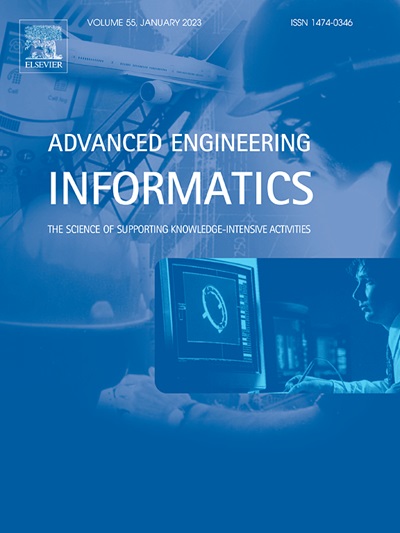PA-WSDIS: A prior-aware weakly supervised defect instance segmentation model for car body surface
IF 8
1区 工程技术
Q1 COMPUTER SCIENCE, ARTIFICIAL INTELLIGENCE
引用次数: 0
Abstract
Car body surface defect instance segmentation is essential for ensuring product quality and setting precise size thresholds for defects during product inspection process. However, few defect instance segmentation applications has been found in industrial scenarios until now. This is due in large part to the fact that the pixel-level annotation of defects is cumbersome and labor-intensive. Although various weakly supervised methods have shown promising results, they usually lack the ability to fully explore prior information and the awareness of hierarchical semantic correlations, thereby limiting the defect instance segmentation performance. To address this issue, we propose a novel prior-aware weakly supervised defect instance segmentation (PA-WSDIS) model for car body surface, removing the need for pixel-level labeling. First, we design a box-driven coarse mask generator to obtain coarse masks, which serve as potential proposals for the subsequent refinement process. Then, we propose a boundary guided prior constraint loss, consisting of boundary alignment and pixel-pair similarity mining losses, to fully leverage prior information to enhance the discriminative ability and provide reliable refinement guidance for the model. Finally, we propose a correlative semantic calibration loss, which comprehensively perceives the rich semantic features of different dimensions from both local and global perspectives. With the collaborative constraints of these meticulously designed loss functions, precise instance segmentation results are achieved. Experimental results showcase the outstanding performance of the PA-WSDIS model with an impressive 87.4% , which is considerably superior to state-of-the-art methods. As far as we know, our proposed method is the first weakly supervised instance segmentation model based on bounding box labels for industrial defect detection tasks.
求助全文
约1分钟内获得全文
求助全文
来源期刊

Advanced Engineering Informatics
工程技术-工程:综合
CiteScore
12.40
自引率
18.20%
发文量
292
审稿时长
45 days
期刊介绍:
Advanced Engineering Informatics is an international Journal that solicits research papers with an emphasis on 'knowledge' and 'engineering applications'. The Journal seeks original papers that report progress in applying methods of engineering informatics. These papers should have engineering relevance and help provide a scientific base for more reliable, spontaneous, and creative engineering decision-making. Additionally, papers should demonstrate the science of supporting knowledge-intensive engineering tasks and validate the generality, power, and scalability of new methods through rigorous evaluation, preferably both qualitatively and quantitatively. Abstracting and indexing for Advanced Engineering Informatics include Science Citation Index Expanded, Scopus and INSPEC.
 求助内容:
求助内容: 应助结果提醒方式:
应助结果提醒方式:


